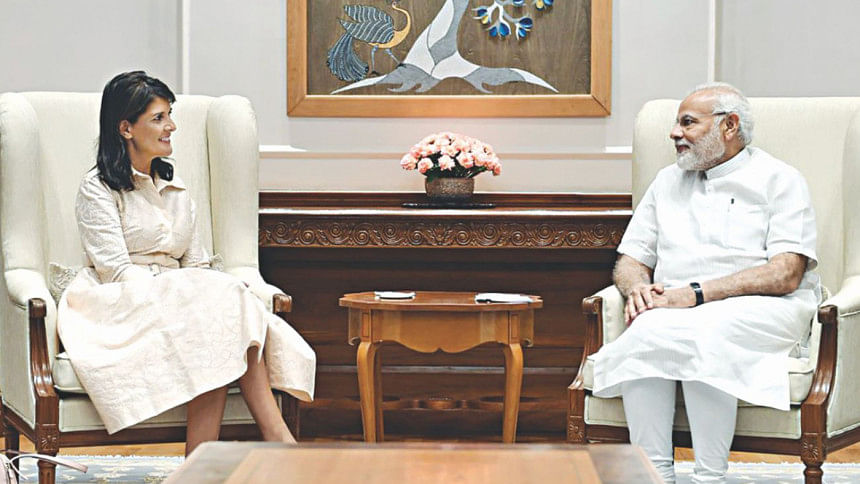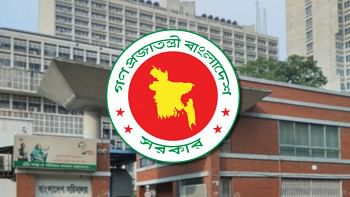India-US ties set upon an uncertain path

India is in for a testing time for conducting its complex relations with the United States. This was clearly brought out by US' inability made public on June 27 to hold the crucial dialogue at the level of foreign and defence ministers in the first week of July in Washington and seek a rescheduling of the events.
Indian External Affairs and Defence Ministers Sushma Swaraj and Nirmala Sitharaman were supposed to travel to Washington for holding what has come to be known in Indo-US diplomatic parlance as 2+2 dialogue with their American counterparts Mike Pompeo and James Mattis.
It was just a week ago that the US had formally announced July 6 as the date for the 2+2 dialogue. Indian media reports, quoting unnamed US officials, attributed the postponement of the 2+2 dialogue to the problem of scheduling the events, whose holding was decided upon in August last year after a meeting between Prime Minister Narendra Modi and President Donald Trump. The announcement of the postponement came on a day when the US Ambassador to the United Nations Nikki Haley met PM Modi in New Delhi and noted the deepening relations between India and the US, particularly in strategic and defence sectors, and the two discussed ways to enhance bilateral cooperation.
So it is clear that the deferment of the 2+2 dialogue cannot be explained merely by scheduling issues and that the reasons are much bigger. The US Embassy in India, however, was quick to try and quell any dim view of the postponement of the 2+2 dialogue by issuing a statement on June 28, saying it should not be linked to India-US ties. But it may not have had the intended effect.
The rough patches in the Indo-US relations have developed primarily on account of three issues: (i) Washington's withdrawal from the 2015 international agreement on Iran's nuclear programme and imposition of sanctions on any country doing business with the Persian Gulf country; (ii) India's move to sign a USD 5.5 billion deal to buy five S-400 Triumf air defence missile systems from Russia targeted by the US legislation Countering America's Adversaries Through Sanction Act (CAATSA); and (iii) friction on imposition of import duties on steel and aluminium from India and 29 goods imported from the US. The impact of American sanctions on India, the world's third largest oil consumer, for import of petroleum from Iran and purchase of defence hardware from Russia could have come up for discussion at the 2+2 dialogue.
Besides the missile defence system, other military hardware deals worth USD 7 billion are also waiting to be wrapped up between India and Russia. Since the US too is planning to sell armed drones and other high-tech equipment to India, there was speculation if the US is working on injecting some kind of flexibility under the CAATSA to those countries keen to buy the Russian weapon systems. In fact, Mattis had earlier favoured an exemption from CAATSA for countries like India. But that may not translate into reality.
India has had strong defence ties with Russia from the days of the Soviet Union and prefers to continue with that despite warming of New Delhi-Washington relations in the last four years of the Modi government. New Delhi believes diversification of options is the name of the game in international relations. Proceeding with this belief, Modi had held an informal summit with Russian President Vladimir Putin in the eastern Russian coastal city of Sochi in May and sought to assure him that India is not into joining any alliance with any one or group of countries. One of the issues Putin had flagged before Modi in Sochi was the proposed Quadrilateral involving India, the US, Japan and Australia. This articulation also found expression in the Indian prime minister's first Indo-Pacific policy statement at the Shangri-La Dialogue in Singapore a few weeks later when he made it clear that while India's relationship with the US has shed the baggage of the Cold War era, it does not believe in forming "alliances of containment."
Much for the same reason, India has so far resisted from signing with the US two pacts—Communications Compatibility and Security Agreement (Comcasa) and Basic Exchange and Cooperation Agreement (BECA)—because in the case of both, Washington's eyes are on containing Beijing. The Trump administration must realise that in international diplomacy you cannot have an "us or they" mindset, particularly for a country like India which is wedded to a multi-polar world order.
What is of immediate worry for India is the US sanction on import of oil from Iran. Seven years ago, the US had pressured India to cut down its procurement of oil from Iran. Over the years, Iran has been replaced as India's top oil supplier to number three at present—behind Saudi Arabia and Iraq. India's import of oil from Iran stood at 22 million tonnes in 2017, down by five million tonnes from 2016. But there is a major difference between what it was under the Obama administration and the Trump dispensation now. In the past, the US had insisted on gradual reduction in oil import from Iran and not total halt to dealings with Iran. But Trump, the great disruptor, is unlikely to extend the concession by even a small window and could be stricter in enforcing the sanctions on business with Iran. A decline in Iranian oil supply may push up its costs in the international market and consequently put pressure on India's oil import subsidy bill in a year when Modi-led Bharatiya Janata Party faces general elections. All in all, India-US ties are set to enter an uncertain path in the weeks to come.
Pallab Bhattacharya is a special correspondent at The Daily Star.





Comments